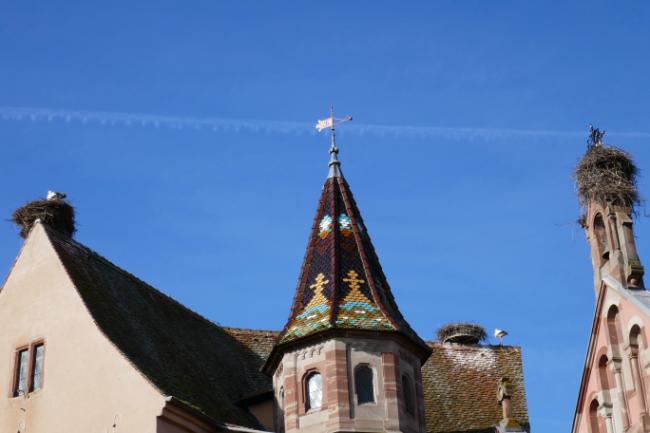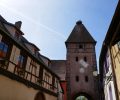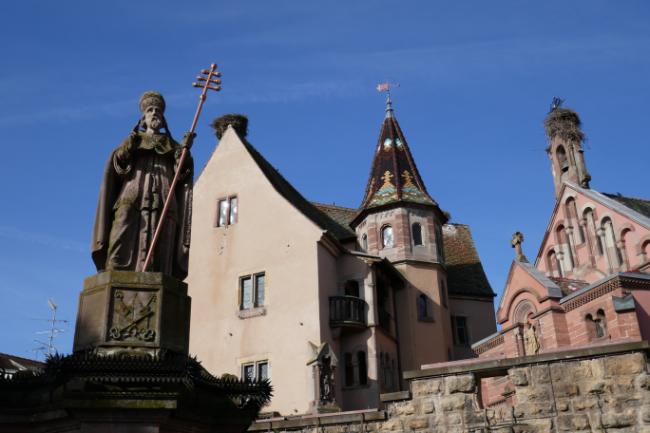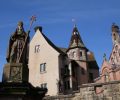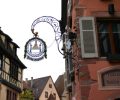Spotting the Storks, Alsace’s Mascot

Spring hails the arrival of life, and in Alsace, this life comes from the arrival of white storks, migratory birds that spend the European winter in the warmer climate of Africa, returning to Europe for the breeding and rearing of their young from Spring to Autumn.
Alsace is known for its storybook villages with colourful timber houses against the backdrop of gorgeous nature, but as anyone who has been will also tell you, it is a place where you can best spot the beautiful white storks. As the symbol of Alsace, white storks are loved across the region, where their presence has been known since the Middle Ages and is associated with folklore stories. Seen as lucky charms, their safe arrival and nesting in the springtime announces the end of winter, the beginning of new life and heralds a good year to come.
Pierre Hieber, a 72-years old nature guide and birdwatcher from Erstein, grew up with the sight of their iconic red legs and black wingtips, hearing the sound of their clattering chatter. “Storks are majestic birds,” Hieber said, “I am always happy to see them or hear them greet each other by clicking their beaks.”
Working in the field as a nature guide, Hieber has been observing birdlife in Alsace most his life, and it isn’t just the storks he watches. Kingfishers, woodpeckers and curlew have been known to the landscape of Alsace. “Unfortunately, these birds have almost all disappeared in Alsace”, he said.
NaturOparC in the village of Hunawihr is another such conservation park that has successfully integrated the stork’s migration and their breeding into the urban environment. While there is a boundary to the park from human settlement nearby, the storks maintain to be wild and are able to choose to come and go as they like. Walkways and viewing platforms are erected in a respectful distance to stork nests where visitors can get a good look at the birds without invading their natural space. The park runs education programs for children and adults on the conservation of storks and other wild birds.
Today, white storks no longer face extinction in the region, and they are a particularly welcome sight for tourists hiking and cycling among the hills and vineyards. In almost every village, the sign of storks as a plush souvenir or their silhouette carved onto wooden furniture or poles is testimony how much Alsatians identify their lives with the storks. For some tourists, it is even the reason they came to Alsace in the first place.
“We’ve had a few people coming exclusively to see storks, and a lot of demand regarding the places where we can see them,” said Thomas Chaudiere from Grand Ried Alsace Tourism. For the best sighting of storks in their natural habitats, Chaudiere recommends spending some time in one of the ‘Village Cigogne d’Alsace’ such as Kaysersberg, Eguisheim, Turckheim or Muttersholtz as these are the places that have a higher concentration of settled storks. He suggests looking up at rooftops and poles for nesting couples, or looking out to the fields where they hunt for small mammals and large insects to eat.
“Storks can sometimes be elusive,” he said, “so keep both eyes open when visiting and you might be surprised.”
Although some are now known to stay around the region, for the best times to sight the storks would be between February and August.
Lead photo credit : NatorOparC near Hunawihr © Amy McPherson
Share to: Facebook Twitter LinkedIn Email
More in alsace, bird-watching, French wildlife, nature in france
Leave a reply
Your email address will not be published. Required fields are marked *

